Ford in Britain have just released its latest range of family MPVs.
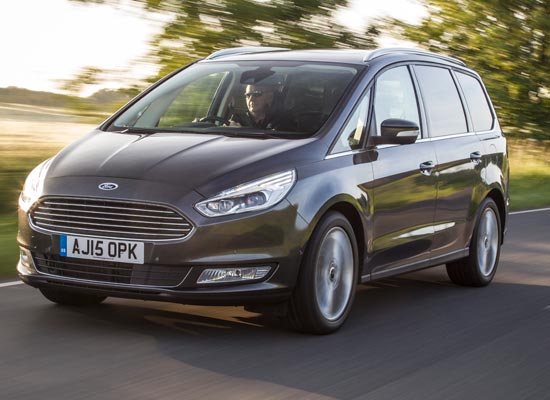

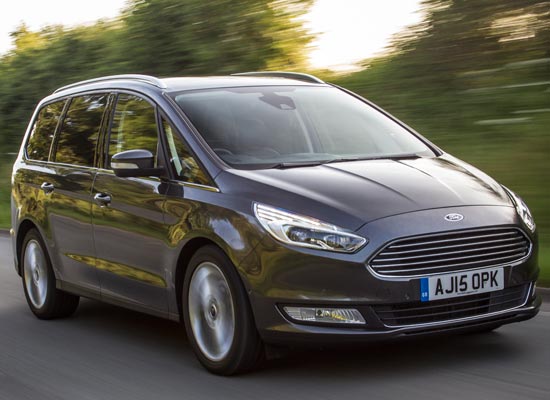
Two of them are completely new versions of existing models: the Galaxy and the S-Max; there are also the the latest versions of the C-Max and Grand C-Max. The smallest of these types is the B-Max.
In an explosion of technology, all the cars get a new set of features or, as in the biggest car, the Galaxy specifically, for example, the new Intelligent Speed Limiter. When activated, this, says Ford, scans traffic signs and adjusts the throttle to help drivers stay within the legal speed limits and avoid fines. Ford bosses reckon this will become something that we will all one day be asking ‘how did we ever live without this?’
Galaxy now also has all sorts of parking aids, useful in a big car that could have up to seven people on board. These include Perpendicular Parking, Park-out Assist, Cross-traffic Alert and Side Parking Aid…all of which add up, in theory, to even the least confident driver to be able to get into any sort of space…and safely out again.
Passenger-carrying being Galaxy’s obvious job, you now have electric operation to fold down the two rear seat rows, individually; the back row can also be raised up again electrically, while the middle row is easy to raise by hand. There is a good flat floor with all the seats down, so van-like loads could also be transported. A further feature is that the seats can all be slid or reclined. There is more room, too.
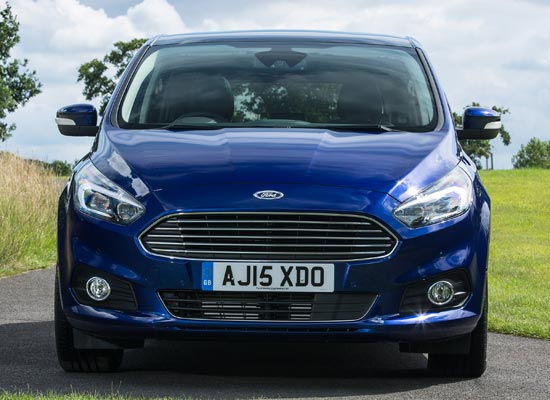
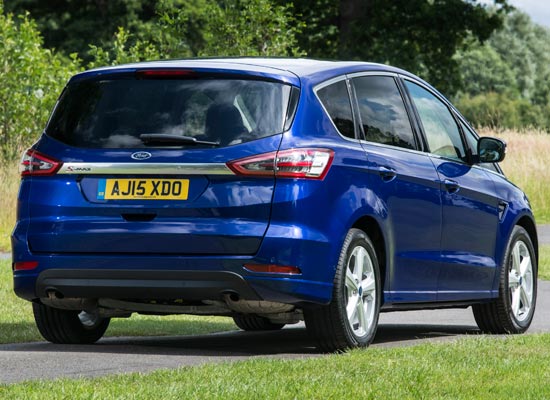
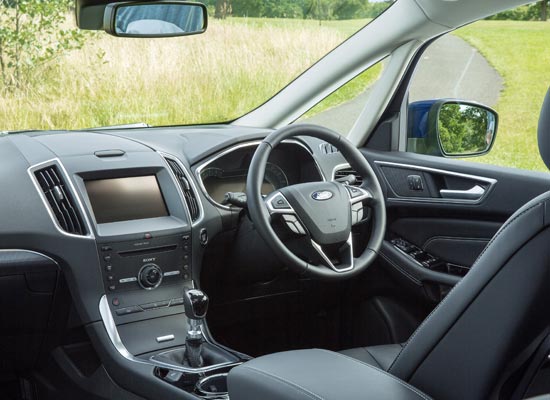
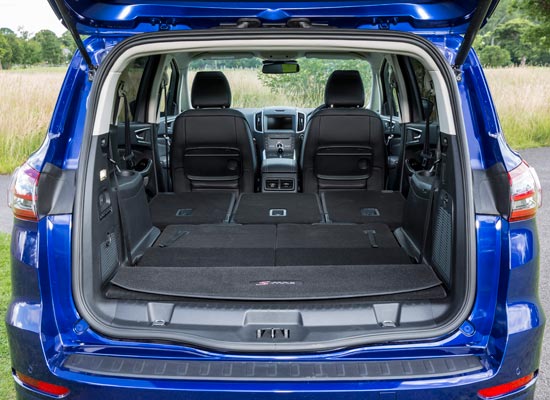
Driving the new Galaxy, the test cars we tried being powered by a smooth 2-litre diesel, was easy and enjoyable. The car is quiet on the road, partly thanks to work done in refining out noise; one cunning idea was the material used in the roof lining that ‘captures’ noise and directs it into foam underlay. Heating and ventilation has been enhanced, with rear-seat occupants having their own system.
The Galaxy Titanium X, a ‘Powershift’ automatic, was priced at £35,395 plus extras bringing it up to £37,390. Wow! But, to be fair it was a lot of very good, luxuriouscar, and the majority of buyers will overcome that financial issue through the monthly payment deal.
I also tried a six-speed manual — nothing wrong with it, but it’s the auto for me.
S-Max, C-Max, Grand C-Max…it not easy to tell the difference. In fact, S-Max is Mondeo-based (and now gets Ford’s IAWD (Intelligent All Wheel Drive), while C-Max is Focus-based. So many combinations of style and equipment are on offer, including Ford’s neat sliding doors, that it’s simply a matter of study to work out which version best suits your own needs. A key question is how many passengers will you carry on a regular basis, and whether or not you need diesel power or will a petrol engine best manage lots of shorter journeys.
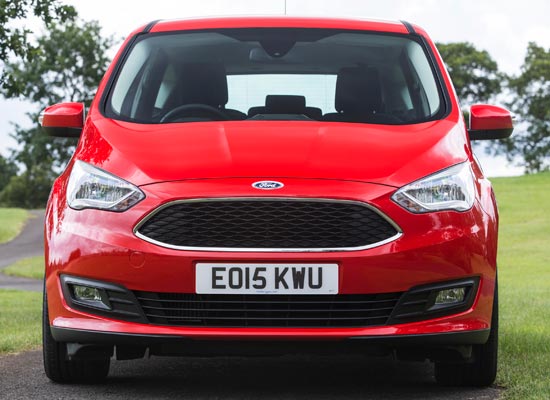
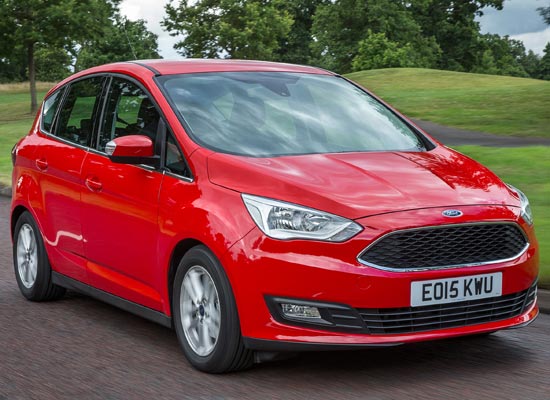
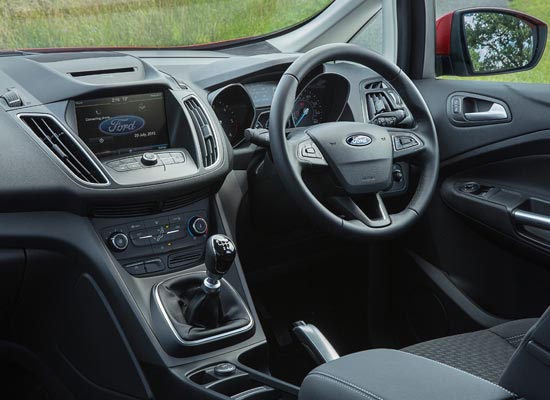
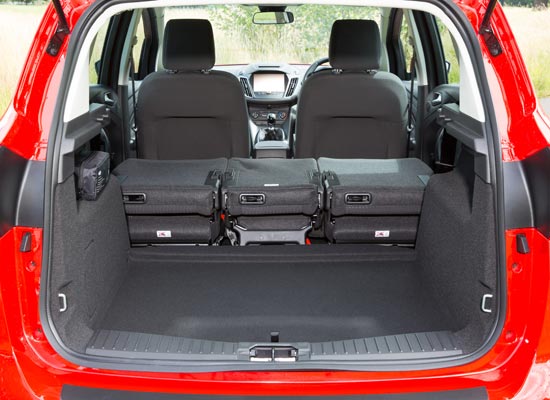
All these new Fords are easy to drive, with flexible capabilities. They have improved performance both in speed and emissions, with the 1.5 diesel C-Max 6-speed manual claiming the best official combined cycle mpg figure of 68.9 (although none of these new cars manages to slip emissions below the magic 100g/km mark) and keep drivers up-to-date with both safety and communications technology, including touchscreens.
The B-Max, the first of Ford’s current MPVs to sport those clever sliding doors, is the cheapest way into this type of vehicle, starting at £18,125.
As to the specifications, Ford are keeping it simple: Zetec is the proper-upper of the range, topped by the Titanium, which in turn is out-gunned by the Titanium Sport; for the Galaxy, the price differential being £1700 for the Titanium over Zetec and £3100 for the Titanium Sport over the Titanium. There are of course loads of options. My personal favourite, wimp that I am, would be the £125 heated steering wheel!
The diesel engines will be selected by 75% of buyers and whether it’s the 1.5 or 2-litre type, with horse power ratings from 120 to 180, they are all quiet and smooth, with good to excellent overtaking oomph.
Ford tells us that they have achieved good RVs (residual values) with these cars; in the Galaxy’s case, two years’ use will see the car retain 48% of its original value. It doesn’t sound that great, but it is a fact of car life that that figure is quite a good one. Also, whoever buys a car without shopping around for a decent discount in the first place?
